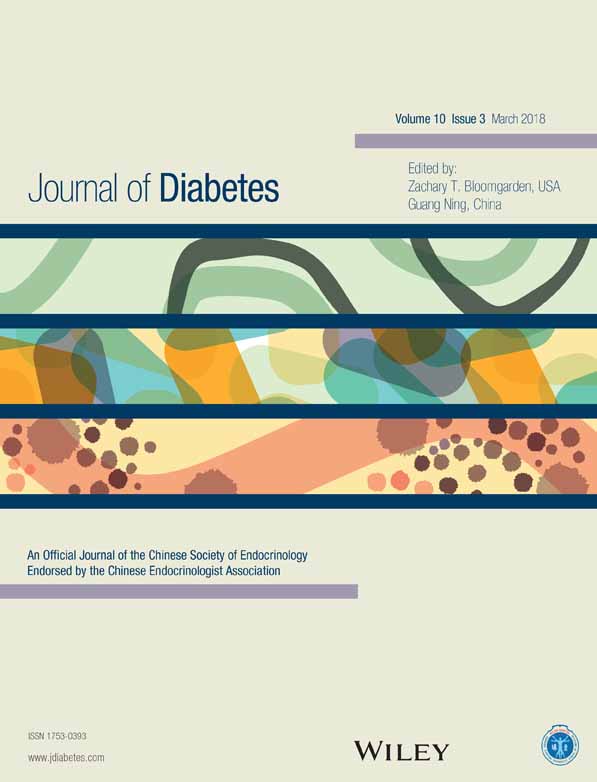Metabolic memory: Evolving concepts
代谢记忆:不断进化的概念
The relationships of glycemic control over time with the development of complications have been investigated in several studies, but new areas of debate continue to arise. Does glycemic control have greater benefit when attained earlier than when attained later in the natural history of diabetes? Is it simply the duration of better or worse levels of glycemia that lead a given individual to have fewer or greater levels of complications? Might glycemic control have similar benefit throughout the duration of diabetes until irreversible damage occurs, perhaps varying by organ system (neurologic, renal, retinal, cardiovascular)? Specific benefits or adverse effects of treatment agents may further complicate the interpretation of what has been characterized as “metabolic memory.”
The notion of metabolic memory was based on findings of the Diabetes Control and Complications Trial (DCCT) of type 1 diabetes (T1D), in which the initial 2% HbA1c separation between the groups of patients randomized to intensive or conventional control was lost during the follow up Epidemiology of Diabetes Interventions and Complications (EDIC) study, when the two groups of participants returned to standard treatment and showed similar HbA1c levels but the initial intensively treated group continued to have lower rates of development of microvascular and, subsequently, macrovascular complications.1, 2 Similarly, a decade after the conclusion of the UK Prospective Diabetes Study (UKPDS), patients with type 2 diabetes (T2D) in the intensive therapy group, despite showing similar levels of glycemic control to those receiving standard care, continued to have significant reductions in microvascular endpoints and reductions in myocardial infarction and all-cause mortality.3 A 6-year follow up of the Veteran's Administration Diabetes Trial suggested that the formerly intensively controlled subset were more likely to maintain an estimated glomerular filtration rate >60 ml/min/1.73m2 than those randomized to standard control.4 However, the UKPDS blood pressure control trial showed a reduction in complications, but no difference between the intervention and control groups was seen during the follow-up of this portion of the study,5 suggesting that no such “memory” exists for these interventions.
The molecular mechanisms underlying these long-term effects of prior periods of better or worse glycemic control continue to be investigated. Extended periods of exposure to high glucose levels persistently dysregulated fibrotic and inflammatory genes in endothelial and vascular smooth muscle cells.6, 7 Furthermore, epigenetic processes may contribute to metabolic memory, with evidence that post-translational histone methylation and changes in microRNA may persist after exposure to high glucose levels is terminated.8 In this context, it is of note that the zebrafish model of T1D exhibits regeneration of the pancreas, becoming euglycemic after a period of hyperglycemia, but with evidence in this model that delay in skin wound healing persists indefinitely even after multiple rounds of fin regeneration, suggesting a long-lasting adverse effect of prior hyperglycemia.9 Such epigenetic differences were reported in genes related to the nuclear factor-κB inflammatory pathway and to diabetes complications in a study of intensive versus conventional treatment patients followed from the DCCT.10 A further mechanism that has been suggested is a role of dysregulated mitochondrial biogenesis contributing to deterioration of retinopathy even after a period of good glycemic control continues.11
Interestingly, in this issue of the Journal, Pantalone et al.12 present a study that touches upon our first question, failing to find a relationship between the HbA1c level measured at the time of diabetes diagnosis and subsequent outcome. The study analyzed relationships between glycemic control and complications among >30 000 people with newly diagnosed T2D followed for the subsequent decade. Might the level of HbA1c at the time of diagnosis simply reflect a brief period of glycemic exposure, so that it would not be expected to be of consequence? The ratio of undiagnosed to diagnosed diabetes in National Health and Nutrition Surveys (NHANES) carried out from 1999 to 2010,13 and from 2011 to 2012,14 is roughly 1: 2, suggesting that at the time of initial diagnosis diabetes often may be present for a substantial period, implying that prediagnosis exposure to elevated glucose levels has a bearing on subsequent outcome.
Bianchi and del Prato suggest an interesting interpretation of “bad glycemic legacy” based on the Veterans Administration Diabetes Trial (VADT).15 In that study, 1791 military veterans with a mean diabetes duration of 11.5 years and poor diabetes control, with baseline HbA1c 9.4%, and assigned to intensive or standard treatment arms showed no overall differences in macrovascular or microvascular endpoints after a median follow-up of 5.6 years.16 Perhaps, then, uncontrolled glycemia of long duration may not be offset by subsequent intensive control, but intensive treatment from the time of diagnosis, even with “bad glycemic legacy” (but of short duration), will be effective in decreasing risk of later complications. Does the retrospective study by Pantalone et al.12 hint at a different aspect of metabolic memory, namely that poor control of glycemia at baseline does not affect the development of complications later if it is effectively managed subsequently? That effects of initial hyperglycemia could be dispelled with excellent glycemic control? Such an interpretation gives cause for optimism and can be used in empowering people developing diabetes to participate in their care. Analysis of more datasets with serial measures of HbA1c may allow us to further understand these relationships, and certainly the underlying molecular mechanisms of metabolic memory deserve further investigation.
既往已经有一些研究调查了随着时间的推移患者的血糖控制情况与并发症发展之间的关系, 但是目前还是不断地有新的争论出现。在糖尿病的自然病程中血糖控制早期达标是否比晚期达标获益更大?仅仅是更好或者更差血糖水平的持续时间导致一个既定患者出现更轻或者更严重的并发症吗?在发生不可逆损害之前的整个糖尿病病程中, 血糖控制都能够获得相似的获益吗?可能因器官与系统(神经系统、视网膜、肾脏、心血管)的不同而各不相同?治疗药物的特殊获益或者不良作用可能会使我们对于“代谢记忆”特征的解释进一步复杂化。
代谢记忆的概念是基于在1型糖尿病(T1D)患者中进行的糖尿病控制与并发症试验(Diabetes Control and Complications Trial, DCCT)研究结果而提出的, 在这项研究中随机分配到强化控制组或者常规控制组的患者之间最初的HbA1c差异为2%, 但是到了后续的糖尿病干预与并发症的流行病学(Epidemiology of Diabetes Interventions and Complications, EDIC)随访研究中两组之间的HbA1c已经没有差异了, 此时两组参与者都恢复了标准治疗并且HbA1c水平也相似, 但是最初的强化治疗组微血管并发症的发生率仍然较低, 而且随后还发现大血管并发症的发生率也较低1,2。同样, 在英国前瞻性糖尿病研究(UK Prospective Diabetes Study, UKPDS)结果公布10年后, 强化治疗组的2型糖尿病(T2D)患者尽管其血糖控制水平与接受常规治疗的患者相似, 但是他们的微血管并发症终点仍然显著减少, 并且心肌梗死与全因死亡率也更少3。在为期6年的退伍军人管理局糖尿病试验的随访中发现, 原先的强化控制亚组患者与随机分配到常规控制组的患者相比估算的肾小球滤过率保持在> 60 mL/min/1.73 m2水平的可能性更大4。然而, UKPDS血压控制试验结果表明可以减少并发症, 但是在这项研究的后续随访期间没有看到干预组与对照组之间的并发症具有差异5, 这意味着这些降压干预措施没有这种“记忆”效应。
既往血糖控制较好或者较差可造成这些远期效应, 其潜在的分子机制仍有待进一步的调查。如果内皮细胞与血管平滑肌细胞长期暴露在高血糖的环境下会导致纤维化与炎症基因持续失调6,7。此外, 表观遗传过程可能也会导致代谢记忆, 有证据表明即使后来已经不暴露在高血糖环境下, 但microRNA翻译之后的组蛋白甲基化以及变异仍然持续存在8。有关这种情况值得我们注意的是, 近几年发现T1D斑马鱼模型的胰腺可以再生, 它在高血糖持续一段时间后血糖又正常了, 但是在这个模型中有证据表明, 即使经过多轮的背鳍再生, 它们的皮肤伤口延迟愈合仍会无限期地持续下去, 这意味着既往的高血糖已经造成了长期的不良影响9。在一项紧接着DCCT进行的随访研究中, 报告了强化治疗组与常规治疗组患者的差异, 发现这种表观遗传差异与核因子-κB炎症通路以及糖尿病并发症的基因有关10。还有人提出了另外一个机制, 那就是线粒体生物合成失调可导致视网膜病变恶化, 即使再经过一段时间的良好血糖控制结果仍然如此11。
有趣的是, 在本期杂志中, Pantalone等12报告的一项研究触及了我们的第一个问题, 他们没有发现在诊断糖尿病时测定的HbA1c水平与随后的结果之间具有相关性。这项研究在> 30000名新诊断的T2D患者中随访了10年, 分析了血糖控制与并发症之间的关系。在诊断时测定的HbA1c水平可能只反映了短暂的血糖暴露时间, 但是这样就不会有什么后果吗?在美国国家健康与营养调查(National Health and Nutrition Surveys, NHANES)中, 从1999至2010年13以及从2011至2012年14未诊断与已诊断的糖尿病比例大约都是1: 2, 提示患者在初次诊断糖尿病时可能已经存在相当长一段时间的糖尿病了, 这意味着诊断之前就暴露在高血糖环境下可能对后续结果具有影响。
Bianchi与del Prato基于退伍军人管理局糖尿病试验(Veterans Administration Diabetes Trial, VADT)结果针对“高血糖后遗症”做出了一个有趣的解释15。在那项研究中, 纳入了1791名平均糖尿病病程为11.5年并且血糖控制不佳的退伍军人, 基线时的HbA1c为9.4%, 将他们分配到强化治疗组或者标准治疗组, 经过中位数为5.6年的随访之后发现大血管或者微血管终点总体来说都没有差异16。也许, 话说回来, 长期未控制的高血糖所造成的伤害并不是随后的强化控制所能够弥补的, 但如果从诊断之后就开始强化治疗, 即使也合并有“高血糖后遗症”(但是时间相对较短), 也许能够有效地减少后续并发症的风险。Pantalone等12所做的回顾性研究暗示着代谢记忆可能还具有不同的方面, 即基线时血糖控制不佳的患者即使随后血糖能够得到有效控制也不会影响后来发生的并发症?初始高血糖造成的影响能够被随后极好的血糖控制所逆转吗?这样的解释提供了乐观的理由, 并且还可以增强糖尿病患者参与治疗的动力。对更多连续测量HbA1c的数据集进行分析后可能有助于我们进一步了解这些关系, 当然代谢记忆的潜在分子机制也值得我们进一步研究。




